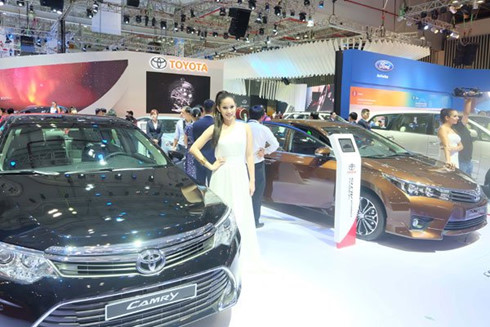Fear of carmakers exiting Vietnam re-emerges
- First public hospital in the North to offer home healthcare
- Why carp hotpot sells like hot cakes in Vietnam
- Number of private cars forecasts to triple by 2025 in HCMC and Hanoi
- NASA Engineer Hired to Work on Uber's Flying-Car Project
For the first time in its 20-year history, the domestic auto market achieved sales of 300,000 units in 2016, a figure said to be large enough for local manufacturers to consider raising the ratio of local content.
Data from JATO, a site offering statistics and analyses on 52 markets around the world based in the UK, reveals that the growth of Vietnam’s auto market was only second to Singapore last year.
It is said that the local auto market is entering the stage of motorization, when car ownership needs shoot up. Would the forecast about automobile assembly joint ventures staging an exodus from Vietnam when the tariffs on imports from ASEAN fall to zero in 2018 become a reality?
 |
Takimoto Koji, head of Japan External Trade Promotion Organization (JETRO) in HCMC, heated up the topic, saying auto assemblers might switch to import.
The slow development of supporting industries at home coupled with the small size of the local market might prompt assemblers to revise their strategies when import duties go down, he explained.
Currently, the popular car brands like Toyota, Honda and Ford hold overwhelming market share. Most of these carmakers have at least one factory in Thailand or Indonesia, or both.
To attract manufacturers to pour capital into Vietnam like Thailand and Indonesia, it is a must to have a huge market and well-developed supporting industries, which however are the two weaknesses of Vietnam.
The size of Vietnam’s automotive market is now about 250,000 units per year, way below other countries in the region such as Thailand with two million vehicles a year. Meanwhile, an automobile production line with efficient operations must reach 200,000 units a year, said Takimoto.
Despite the sales record of 300,000 units in 2016, there are two brands selling around 50,000 vehicles each, while the remainder was shared by many domestic assemblers and other importers.
Meanwhile, the Industrial Policy and Strategy Institute (IPSI) remarks that, compared to Thailand and Indonesia, Vietnam is far behind in terms of supporting industries. IPSI’s previous calculations show that the cost of automobile production in Vietnam is about 23% higher than in these two countries.
More to leave than to stay
Analysts and automakers predict that while some major enterprises may continue assembling their best-selling models, the rest will likely switch to import and distribution of CBU vehicles.
Takimoto said there were signs of some assemblers shifting to importing vehicles from other countries in the region, instead of buying parts for assembly in Vietnam for a higher profit.
Even some auto assemblers and manufacturers have hinted at the possibility of switching to importing cars if duties on CBU imports from ASEAN countries fall to 0% in 2018. In fact, a number of firms have been doing so for the past two years.
Even Toyota Vietnam, despite its very good business results last year and its current role as the market leader, seems to be cutting down on the number of its locally-assembled models and switching to import.
Honda on its official entry into Vietnam chose Civic as the first model to be assembled at a plant in Vinh Phuc for its many competitive advantages. However, after about 10 years, Honda Vietnam is now importing Civic cars from Thailand.
Some other passenger car brands like Mitsubishi, Suzuki and Isuzu are also importing more than the volume assembled in Vietnam.

